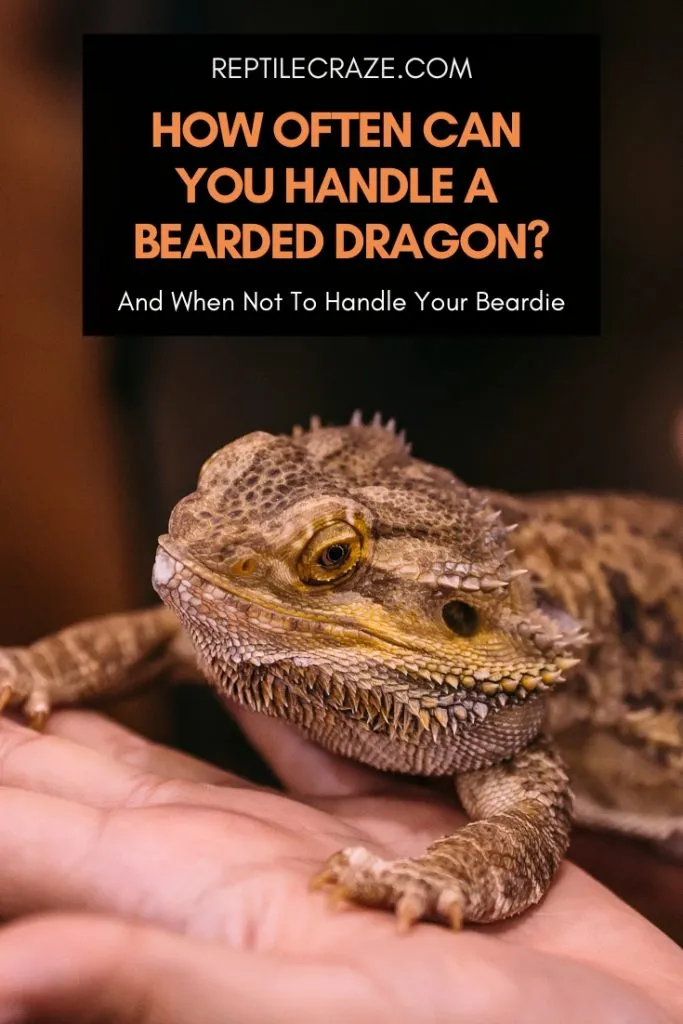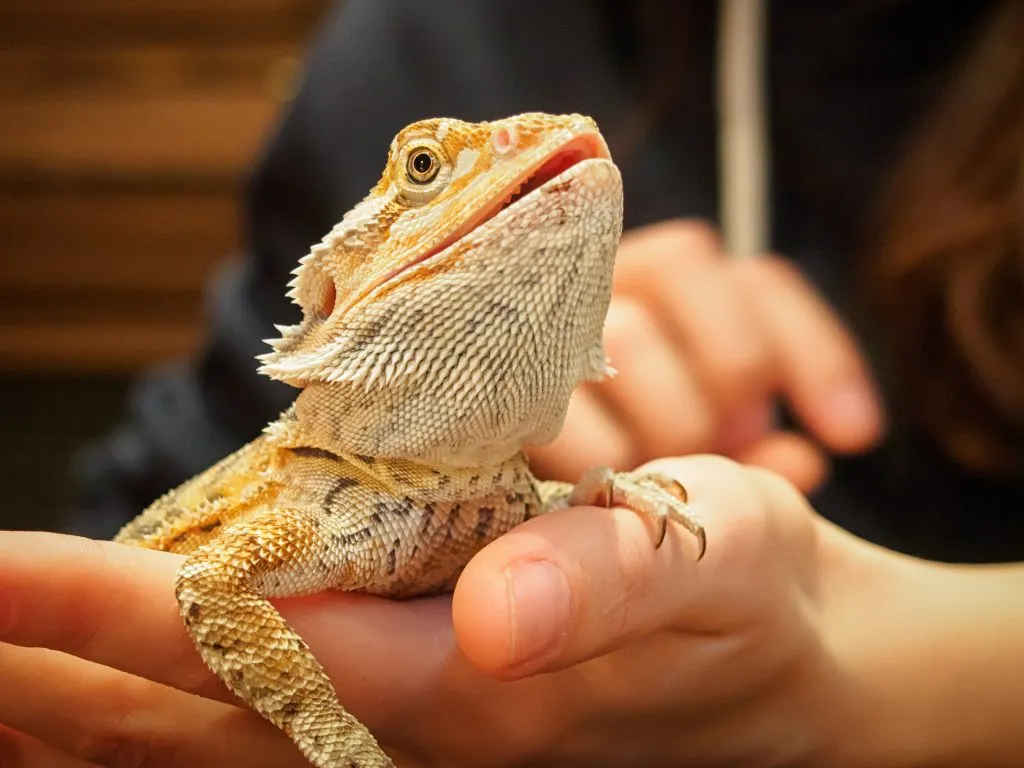
Bearded dragons are known for tolerating handling quite well. So it is understandable that you want to handle your bearded dragon as often as possible. But how often can you handle a beardie?
Bearded dragons can be handled every day. The sessions can be repeated several times a day and can last anywhere between a couple of minutes to two hours as long as the bearded dragon has the opportunity to heat up properly before the handling session.
In this post, we will discuss handling frequency depending on the bearded dragon’s age – why handling is important, how to do it, and when to avoid it.
Table of Contents
How Often Can You Handle A Bearded Dragon?
You can handle your bearded dragon every day, for a couple of times. The exact handling time and frequency depend on the bearded dragon’s age, personality, and history (how used it is to handling).
In general, baby bearded dragons (over two weeks of age) can be handled in short sessions (between five and 15 minutes), two to four times per day. Adult bearded dragons (seven months or older) can be handled for up to two hours.
Remember, bearded dragon hatchlings (less than two weeks old) should not be taken out of the
When Not To Handle Your Bearded Dragon?
You should not handle your beardie when clearly stressed out. Compared to other pet reptiles, bearded dragons tolerate handling relatively well. However, it can still be stressful, even if done right.
Here are some situations where you should avoid handling your beardie (or handle it only if necessary).
Before & After Meals

Bearded dragons need time to warm up before eating. They also need heat and UV light to digest the meal. Therefore, never handle your beardie immediately before and after mealtime.
When Brumating
Do not handle or disturb your bearded dragon in any way while brumating (the reptile equivalent of hibernating). The only thing you need to do is ensure it has a source of fresh water at all times.
If Sick Or Pregnant
As with all animals, handling bearded dragons when sick is inadvisable (unless it is time for a vet visit). Sick bearded dragons need time and space to recover and should not be bothered. The same applies to pregnant beardies.
While New
New beardies need time to adjust to the environment before being handled. The new environment is stressful enough, and handling will only amplify the anxiety.
This article will show you how to tell that your bearded dragon already likes you.
Around Other Pets & People
Do not take your beardie if there are other pets around (cats/dogs) or if you have new people over. Pets can react unexpectedly, and new people can be stressful.
How To Properly Handle Your Bearded Dragon?
To properly handle a beardie, first, give it time to get used to your presence. To do this, put your hand inside the
Once the beardie is comfortable with your presence, you can start picking it up. Do this without sudden movements and gently. Always hold the bearded dragon under its belly.
At first, keep the handling sessions short and infrequent. Over time, adjust the handling time based on the beardie’s preferences and needs (cleaning the tank, bathing, vet visits).
Here is a short video explaining how to properly handle a bearded dragon.
What Not To Do When Handling Your Bearded Dragon?
Forced interactions, rough handling, and dangerous scenarios are some of the things you need to avoid when handling your beardie.
Here is a quick list of what not to do when handling a bearded dragon:
- Do not chase the bearded dragon around the
tank - Do not squeeze (bearded dragons are sensitive to rough handling)
- Do not grab the beardie by the limbs or tail (this is seen as a predatory behavior)
- Do not cover the beardie’s head (most of the sensory organs are there, and blocking them can be distressing)
- Do not make the bearded dragon stay on its back (its own weight may crush the internal organs)
- Do not keep the beardie out for too long (more than a couple of hours)
- Do not leave the bearded dragon on high surfaces (beardies do not fear height, and uncalculated jumps can result in injuries like jaw fractures).
- Enchi Ball Python: A Unique and Stunning Morph of Python regius - March 27, 2025
- Emerald Tree Monitor: The Enigmatic Green Guardian of the Rainforest - March 26, 2025
- The Egyptian Cobra (Naja haje): A Fascinating Serpent - March 25, 2025
